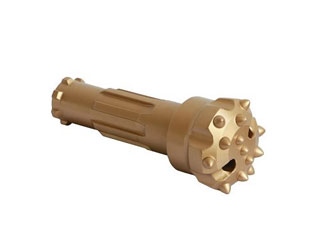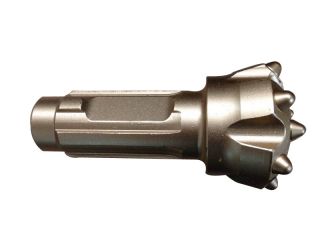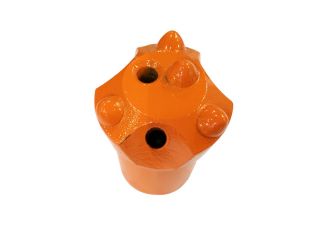How is DTH drill pipe produced? What are the processing procedures?
- Date:2022-07-09
- Share with:
(1) Drill pipe blanking
A single pipe body of equal length is cut from a seamless steel pipe. The seamless steel pipe here is formed by hot extrusion of cylindrical steel, and the composition of the steel pipe is tested.
(2) Drill pipe heading
Since the two ends of the drill pipe are in direct contact with each other during the working process, the upsetting head should be thickened on both ends of the down-the-hole drill pipe. That is, the intermediate frequency furnace is used to heat the two ends of the pipe body, and then the hot extrusion method is used to add some materials on the steel pipe to the two ends, which is called upsetting.
(3) Drill pipe machining one
The next process immediately after the upsetting is to rough machine both ends of the tube body.
(4) Quenching and tempering of drill pipe
The heat treatment process is used to improve the overall mechanical properties of the DTH drill pipe, so that it has strong hardness and good plasticity and toughness.
①Austenitization: When the steel with non-austenite structure at room temperature is heated to above the Ac1 temperature, the room temperature structure of the steel begins to transform into austenite; it is called austenitization. This austenitic structure is only stable at high temperatures.
②Quenching: Heat the steel to the temperature given above the critical temperature Ac3 or Ac1 and keep it for a certain period of time, and then rapidly cool it.
③Tempering: Heat the quenched or normalized steel to a selected temperature below the critical temperature, keep it for a certain period of time, and then cool it at a suitable cooling rate to eliminate the quenching and normalizing. Residual stress and increase the ductility and toughness of steel.
(5) Drill pipe inspection
The mechanical properties of the quenched and tempered DTH drill pipe were tested. The main ones are hardness testing, testing equipment Rockwell hardness tester; and analysis of tissue.
(6) Drill pipe straightening
Due to the structural stress and thermal stress of the drill pipe during the quenching process, the drill pipe after quenching and tempering will be deformed, and it can be restored by straightening.
(7) Ultrasonic flaw detection of drill pipe
It is used to inspect the surface and internal defects of metal materials and some non-metal materials, and use physical properties to judge the defects and abnormalities of workpieces or materials.
(8) Drill pipe machining two
The external thread and the internal thread are respectively machined at both ends of the drill pipe for connection.
(9) Coating
After machining, the drill pipe should be painted to prevent the pipe body of the down-the-hole drill pipe from rusting, and also to improve the appearance of the product.
(10)Drill pipe packaging
After all processing steps are completed, the products are packaged and sold to customers.
DTH drill pipes plays an important role throughout DTH drilling (regardless of application, rock type, drilling depth or rig). The key characteristics of high-quality DTH drill pipe are durability, accuracy and manageability. RS DTH drill pipe is made of high-quality alloy, and the seamless steel pipes at both ends are connected by friction welding process. When working, the high-pressure air is delivered to the DTH hammer through the DTH drill pipe, and the rotation and pressure are transmitted to the DTH hammer at the same time.





